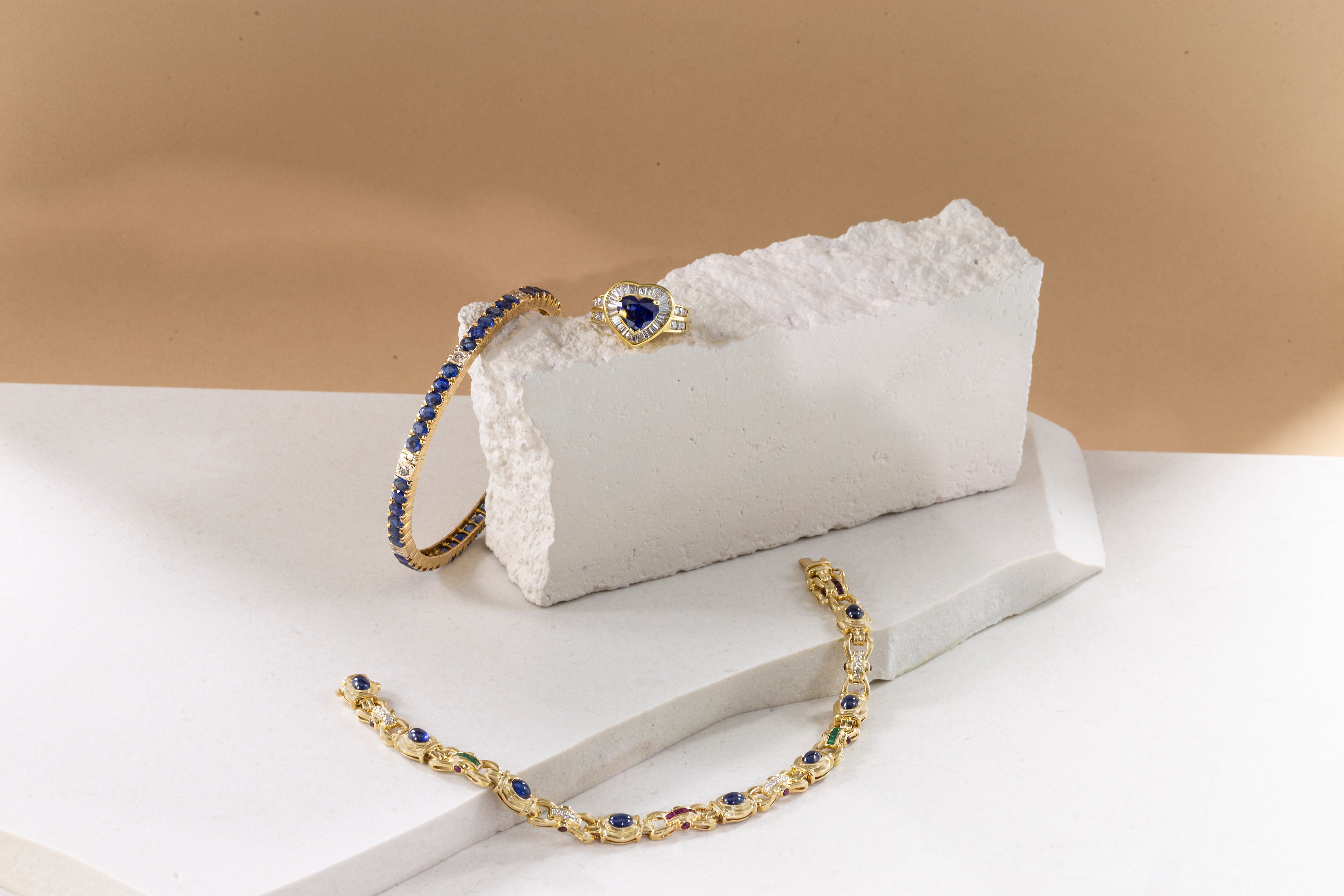
How to Tell if a Piece of Jewelry Is Gold? A Practical Guide to Recognizing the Most Valuable Metal
Gold has fascinated humanity since ancient times. Its shine, durability, and rarity have made it a symbol of wealth, elegance, and permanence. Today, it remains the undisputed star of women's jewelry and the most sophisticated pieces. But with its popularity also comes questions: How do you know if a piece of jewelry is truly gold? How can you distinguish a valuable piece from an imitation?
Whether you inherited an antique piece of jewelry, purchased something on a trip, or just want to make sure what you have is real, this guide will help you recognize if your piece is made of genuine gold.

1. The karat stamp or mark: the first clue
Most genuine gold jewelry has a small engraving indicating its purity. The most common are:
-
24K : Pure gold (99.9%). It is very soft and rarely used in jewelry.
-
18K (750) : 75% gold, 25% other metals. It is the most valued in high-end jewelry.
-
14K (585) or 10K (417) : more resistant, but with lower gold content.
You can find these stamps on the inside of rings, on the clasps of chains, bracelets, or earrings. If there's no mark, it's not necessarily counterfeit, but it's a good idea to have it checked by a professional.
2. Color and brightness: a question of authenticity
Genuine gold has a warm, deep luster that doesn't tarnish easily. Depending on its composition, it can come in different shades:
-
Yellow gold : the most classic, with a rich, deep golden tone.
-
White gold : lighter, it usually has a rhodium plating that gives it shine.
-
Rose gold : a mix of gold and copper, with a romantic and soft tone.
Imitations often have overly bright, artificial, or uneven colors. Especially if the piece combines gold with other stones like diamonds, it's important that the entire piece maintains a consistent quality. In diamond jewelry, real gold is the perfect setting to highlight its beauty.
3. Magnetic Test: A Useful Home Method
Gold isn't magnetic. If you hold a strong magnet near it and the piece is attracted, it's probably not solid gold, but contains other metals or is simply an imitation. This test isn't definitive, but it can give you a first idea.
4. Check for wear or color change
Many gold-plated or gold-plated pieces show areas over time where the base metal (silver or copper) begins to show through. This is a clear indication that it is not solid gold.
5. Consult with experts: the certainty you need
The surest way to know if a piece of jewelry is authentic is to visit a specialized jewelry store. At La Fontaine, we have professional instruments such as hydrometers and chemical tests that allow us to accurately determine the composition of each piece.
At La Fontaine we appraise and buy gold and platinum jewelry.
Whether you want to sell, transform, or simply find out the value of your pieces, at La Fontaine we offer personalized, professional, and confidential service. We perform professional appraisals of gold jewelry, whether antique, modern, damaged, or even loose. We also work with platinum, another precious metal we value for its rarity and durability.
And if you want to take your experience even further, we invite you to explore our selection of women's jewelry: rings, bracelets, earrings, and necklaces crafted with real gold, some with the perfect combination of gold and diamonds.
Trust, experience and dedication
Recognizing an authentic jewel is important, but even more so is knowing where to wear it. At La Fontaine, you'll not only find authentic, elegant, and timeless pieces, but also the support of a team that values every detail.
We look forward to seeing you together to discover the true essence of gold.